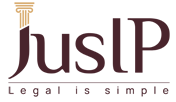Registration Benefits
Registration results in statutory protection of a trademark for several years subject to renewal and develops a unique specific brand for people to identify and associate with. It gives the registered proprietor the exclusive right over the trademarked word, logo, name, label, device, sound, graphic or even a color combination in relation to the goods or services for which it is registered.
By acting as a public notice, it protects the mark by preventing similar or identical marks from being registered and opens the avenue to obtain relief with respect to infringement of the same.
Procedure of obtaining registration of a trademark:
I. Trade Mark Search
Since there are already several kinds of trademarks available and registered, a Trade Mark search, which can also be carried out through the online official database of the Trade Marks Registry by a Trademark Advocate / Attorney / Agent, helps in identifying if there are pre-existing similar trademarks. It also gives you a forewarning of the possibility of a trademark conflict or litigation.
A trademark search of the official database of the Registry shall provide details regarding all trademarks pre-existing with the Registry, whether registered or unregistered.
II. Filing of an Application
The application for trademark registration has to be filed at the Trade Mark Registry in the prescribed format along with the fee. Application can either be filed online or physically at the Trade Marks Registry. The Trade Marks Act, 1999 allows both Single Class and Multi Class applications to be filed.
Several information and documents may be required for incorporation into the application for trademark registration including a user affidavit along with the evidence, for supporting a prior usage, in case claimed.
III. Examination of the Application
The application is taken up for examination subsequent to filing where the Registrar examines the mark under various grounds for any discrepancies.
The examination might take around 1 to 2 months.
The examiner might accept the trademark absolutely, conditionally or issue objections.
If the trademark is accepted unconditionally, it shall, on an order of Acceptance and Advertisement by the Registrar, get published in the Trademark Journal for the purpose of opposition by third parties.
In case of an objection raised by the Registrar, which can be either, absolute, relative or procedural, an examination report would be issued underlying the objections or the conditions to be fulfilled.
The response is required to be submitted within 1 month, which if satisfactory results in the trademark being published. If found lacking, the response can also lead to a hearing of the matter. The Applicants and Attorneys / Agents have the option of attending hearings through video conferencing as well.
IV. Advertisement and Opposition
Every trademark application that sails through the examination process successfully, gets advertised in Trade Marks Journal. The Trade Marks Journal is available on the official Registry’s website and gets updated every Monday of the week.
The main aim of publication of the trademark is to allow anyone, in the general public, who may have an objection, the opportunity to do so. Any third party can file an opposition against an advertised / published trademark providing necessary grounds and evidence of such opposition.
After a period of 4 (four) months from the publication, if there is no opposition, the trademark proceeds for registration. In case an opposition is filed, the Applicant is given an opportunity to file its counterstatement to the opposition along with evidence.
Thereafter, detailed hearings are conducted by the Registrar of Trade Marks to decide on the opposition.
V. Registration and Renewal
The final step towards the entire procedure is registration where the application proceeds to registration. Without any objection or opposition in the registration process of the trademark, it might take about 10-12 months for the trademark to be registered. The registration is then valid for a period of ten years, whereafter, the mark can be renewed for another ten years.
Once the application proceeds for trademark registration, following publication in Trademark Journal, a registration certificate under the seal of the Trademark Office is issued.





